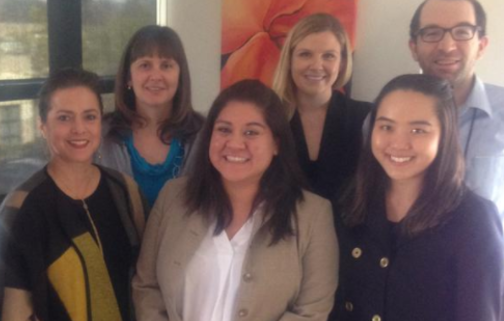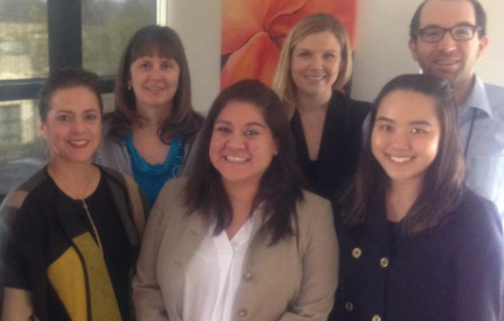NATIONAL ATR NETWORK SURVEY
Hundreds of ACEs, trauma, & resilience networks across the country responded to our survey. See what they shared about network characteristics, goals, and technical assistance needs.
Meetings of the San Diego Trauma Informed Guide Team (SD-TIGT) now start with a moment of mindfulness.
That could mean a breathing exercise or a quick round-robin with each participant saying a positive word before the group dives into that day’s agenda, says Heidi Echeverria, Mobilizing Action for Resilient Communities (MARC) project manager. “We’re trying to make it a habit to start with positivism. Taking the time to do this creates a calm environment and a lightness among members.”
Cultivating Trauma-Informed Practices
Cultivating trauma-informed practice, both within SD-TIGT and throughout the San Diego region, has been the focus of the first year of the MARC grant. For MARC project leaders, that meant doing their homework, thinking carefully about roles, time frames and language before each meeting.
In March 2016, SD-TIGT’s leadership team began work on a strategic plan for the network, a grass-roots collaborative that includes the County of San Diego Behavioral Health Services, San Diego Youth Services, and the Union of Pan Asian Communities—a total of 25 members who come to at least two meetings a year.
SD-TIGT was created in 2008 and had a track record of providing training, boosting trauma-awareness and welcoming participants from a range of systems. It was critical to build on that foundation in creating the strategic plan, says Rosa Ana Lozada, CEO of Harmonium, Inc. (MARC project backbone organization) and longtime member of SD-TIGT.
It was also essential to have a realistic time frame. “Originally, going into the strategic planning process, we had a thought that it could be [done in] a marathon meeting. Then we realized it needed to be done regularly”—initially, in monthly meetings, then twice-a-month gatherings over a period of nine months to hammer out a mission statement, leadership roles and decision-making guidelines, says Echeverria.
Preparation is Key
Lozada and Echeverria prepared for each meeting, anticipating group members’ questions and talking through conflicts that might arise. The result: a two-year plan that succinctly states SD-TIGT’s mission—“promoting trauma-informed services in the San Diego region through collaboration, advocacy and education”—outlines various levels of involvement and clarifies the group’s core values of respect, accountability and diversity.
“One of the pitfalls of strategic planning is that you finish, feel relieved and shelve it,” says Lozada. “We will use it as a constant reference and tool, the compass and guide for all the work we do.”
Questions for the Future
Questions remain: How can SD-TIGT’s co-chairs take on a more defined role? What does it mean to integrate community voices in an authentic way? How can SD-TIGT influence top-level managers and entire systems of care?
“We have broader representation than we did in the past,” says Lozada, but the group wants to reach others who are not yet included: members of the military; educators from early childhood to the university level; health care industries; consumers; businesses; and agencies that work across the lifespan from infancy to geriatrics.
Network leaders have also reached out to collaborate with other San Diego organizations that promote trauma-informed practice. “Anyone we meet, we say, ‘Do you know about SD-TIGT?’” Lozada says. “[Heidi] tries to get them engaged and interested and attending a meeting.”
Building Commonality
To keep SD-TIGT open to all while recognizing varying constraints on members’ time, the group developed clear levels of involvement: a leadership team of seven people; “members” who attend at least two meetings a year, “visitors” who have attended once and “friends” who follow the activities of the network through ACEsConnection, e-mail or any other social media platform.
The planning process “helped us develop a common agenda and move toward building common vocabulary,” says Lozada. “It gave us a clear mission and goals” that include expanding the network, doing a survey of member agencies’ capacity, sharing best practices for program and policy change and partnering with community members of all ages.
The Trauma-Informed Journey
In addition to the “mindful moment,” each Guide Team meeting now includes a 15-minute segment titled “the trauma-informed journey,” a time when member agencies can share what they’re learning and implementing.
“Members wanted to know more about how we are shaping policy within our own agencies,” Echeverria explains. Sharing those efforts is important as SD-TIGT also looks at influencing broader, systemic changes across the county.
“We have individuals [on the Guide Team] who represent their own agencies and programs but may not have the authority to influence policy at a bigger level,” Lozada says. Still, she says, those agency-level changes “are in themselves very big and need to be celebrated and acknowledged.”
Planning for the Future
As the ink dries on SD-TIGT’s strategic plan, its leaders are thinking about sustainability beyond the MARC grant, about the realistic limits on people’s time and about the big picture of trauma-informed change, of which the Guide Team is just one part.
“This is a voluntary effort,” says Lozada. “Any level of this still requires commitment and time. How do we make it easier, less stressful and more efficient, so people feel that no one person has to carry it all?
“We are one venue, but we are not the end-all. There’s no such thing as a single effort if you want to do this work.”
A Sustainable Effort
One recent event left Echeverria and Lozada optimistic about the future of trauma-informed change in San Diego. They worked with a graduate student at San Diego State University (SDSU) who learned about ACEs and resilience and wanted to train her colleagues in a range of fields—probation, education, social work and health. They helped her develop and deliver a training that covered trauma, brain development, client advocacy and self-care. Sixty students and community members attended.
“At the SDSU School of Social Work, a club created a resource fair to connect students to trauma-informed efforts that are going on in San Diego,” Echeverria says. “The excitement of students who are thinking about how to advance this effort—that confirmed that there will be sustainability.”
This article is part of a community update series following the ATR networks participating in the MARC 1.0 Initiative. Read the other updates from San Diego County, CA:
